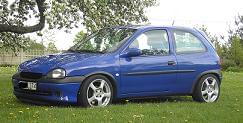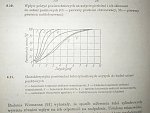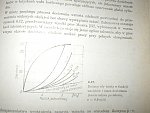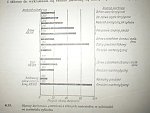docieranie silnika po tuningu lub silnika (seryjnego) przeznaczonego do sportowej jazdy
przepisow jest wiele. jezdzic spokojnie przez 3000 km, przez 5000km i stopniowo krecic wyzej i wiecej obciazac silnik itd, itd, itd. jednak to dotyczy silnkow ktorymi jezdzi sie normalnie.
a co z takimi jak nasze (a przynajmniej wiekszosc naszych), ktore nie raz krecone sa pod czerwone??
na sr przestudiowalem duzo o docieraniu i wiem mniej niz wczesniej, ale wedle powiedzenia : docieraj szybko bedziesz jezdzil szybko, docieraj wolno bedziesz jezdzil wolno, sklaniam sie ku szybkiemu dotarciu.
podrzucam jeden, uwazam ciekawy link, a w nim kolejny dosc chyba kontrowersyjny
http://www.racingforum.pl/index.php?showtopic=41314
(wrazie niedziałania linka, wkleje ponizej jego najwazniejsza tresc:
The following is part of the Formula Atlantic Motor kit instructions, from TRD:
To ensure long life and reliability you must properly break in your freshly assembled engine.
For a high performance street motor fill the engine with a good grade 20W-50 Mineral based oil. Fill the oil filter with oil before installing it. Remove the spark plugs and crank the engine until the oil pressure comes up on the gauge.
Re-install the spark plugs. Now you are ready to start her up. Start the engine and bring it immediately to 2,000 rpm. Vary the engine speed between 2,000 - 3,000 rpm for about 30 minutes. After 30 minutes stop the engine, check the valve lash and re-torque the head bolts. Drain the oil and change the filter. Re-fill the engine with 20W-50 Mineral based oil.
Drive the car slowly for about 500 miles keeping the rpm under 4,000. Don't lug the engine either because that's worse for the motor than over revving it. After 500 miles change the oil and filter again. You can now use a synthetic oil if you want to. Use a 20W-50 oil and change it every 3,000 miles. Your engine is now broken in.
For a race engine broken in on the dyno the procedure is a little different. Note that this procedure is for a race clearanced engine.
For the initial run use a Mineral based 20W-50 oil. Run a hotter spark plug than you normally would run. Prime the oil system and the fuel system. Start t6he engine and bring it up to 2,000 - 3,000 rpm with no load. Watch the oil pressure and check for leaks. After 30 minutes stop the motor, check the timing, re-torque the head and check valve lash. Then, run the engine with a light load between 2,000 � 3,000 rpm for another 30 minutes. After 30 minutes change the spark plugs to the normal heat range you are going to run. Do a full throttle full load pull up to the bottom of the power band. Quickly chop the motor.
Check the spark plugs and the BSFC numbers if your dyno is equipped to do so to confirm the jetting. If everything looks good do a full throttle full load pull.
The engine is now ready to race. )
niestety instrukcja TRD nie rozwiewa wszystkich watpliwosci, natomiast Motoman (http://www.mototuneusa.com/break_in_secrets.htm) nie przekonuje do konca
(tutaj tak samo najwazniejsza tresc, moim zdaniem:
How To Break In Your Engine For
More Power & Less Wear !
One of the most critical parts of the engine building process is the break in !!
No matter how well an engine is assembled, it's final power output is all up to you !!
Although the examples shown here are motorcycle engines,
these principles apply to all 4 stroke engines:
Street or Race Motorcycles, Cars, Snowmobiles, Airplanes & yes ...
even Lawn Mowers !!
What's The Best Way To Break-In A New Engine ??
The Short Answer: Run it Hard !
Why ??
Nowadays, the piston ring seal is really what the break in process is all about. Contrary to popular belief, piston rings don't seal the combustion pressure by spring tension. Ring tension is necessary only to "scrape" the oil to prevent it from entering the combustion chamber.
If you think about it, the ring exerts maybe 5-10 lbs of spring tension against the cylinder wall ...
How can such a small amount of spring tension seal against thousands of
PSI (Pounds Per Square Inch) of combustion pressure ??
Of course it can't.
How Do Rings Seal Against Tremendous Combustion Pressure ??
From the actual gas pressure itself !! It passes over the top of the ring, and gets behind it to force it outward against the cylinder wall. The problem is that new rings are far from perfect and they must be worn in quite a bit in order to completely seal all the way around the bore. If the gas pressure is strong enough during the engine's first miles of operation (open that throttle !!!), then the entire ring will wear into
the cylinder surface, to seal the combustion pressure as well as possible.
The Problem With "Easy Break In" ...
The honed crosshatch pattern in the cylinder bore acts like a file to allow the rings to wear. The rings quickly wear down the "peaks" of this roughness, regardless of how hard the engine is run.
There's a very small window of opportunity to get the rings to seal really well ... the first 20 miles !!
If the rings aren't forced against the walls soon enough, they'll use up the roughness before they fully seat. Once that happens there is no solution but to re hone the cylinders, install new rings and start over again.
Fortunately, most new sportbike owners can't resist the urge to "open it up" once or twice,
which is why more engines don't have this problem !!
An additional factor that you may not have realized, is that the person at the dealership who set up your bike probably blasted your brand new bike pretty hard on the "test run". So, without realizing it, that adrenaline crazed set - up mechanic actually did you a huge favor !!
On the Street:
Warm the engine up completely:
Because of the wind resistance, you don't need to use higher gears like you would on a dyno machine. The main thing is to load the engine by opening the throttle hard in 2nd, 3rd and 4th gear.
Realistically, you won't be able to do full throttle runs even in 2nd gear on most bikes without exceeding 65 mph / 104 kph. The best method is to alternate between short bursts of hard acceleration and deceleration. You don't have to go over 65 mph / 104 kph to properly load the rings. Also, make sure that you're not being followed by another bike or car when you decelerate, most drivers won't expect that you'll suddenly slow down, and we don't want
anyone to get hit from behind !!
The biggest problem with breaking your engine in on the street (besides police) is if you ride the bike on the freeway (too little throttle = not enough pressure on the rings) or if you get stuck in slow city traffic. For the first 200 miles or so, get out into the country where you can vary the speed more
and run it through the gears !
Be Safe On The Street !
Watch your speed ! When you're not used to the handling of a new vehicle, you should accelerate only on the straightaways, then slow down extra early for the turns. Remember that both hard acceleration and hard engine braking (deceleration) are equally important during the break in process.
On the Racetrack:
Warm the engine up completely:
Do one easy lap to warm up your tires. Pit, turn off the bike & check for leaks or
any safety problems. Take a normal 15 minute practice session
and check the water temperature occasionally. The racetrack is the perfect environment to break in an engine !! The combination of acceleration and deceleration is just the ticket for sealing the rings.
Go For It !!
Yeah - But ...
the owner's manual says to break it in easy ...
Notice that this technique isn't "beating" on the engine, but rather taking a purposeful, methodical approach to sealing the rings. The logic to this method is sound. However, some will have a hard time with this approach, since it seems to "go against the grain".
The argument for an easy break-in is usually: "that's what the manual says" ....
Or more specifically: "there are tight parts in the engine and you might do damage or even seize it if you run it hard."
Consider this:
Due to the vastly improved metal casting and machining technologies which are now used, tight parts in new engines are not normal. A manufacturing mistake causing a tight clearance is an extremely rare occurrence these days. But, if there is something wrong with the engine clearances from the factory, no amount of gentle running will fix the problem.
The real reason ???
So why do all the owner's manuals say to take it easy for the first
thousand miles ???
This is a good question ...
--------------------------------------------------------------------------------
Q: What is the most common cause of engine problems ???
A: Failure to:
Warm the engine up completely before running it hard !!!
Q: What is the second most common cause of engine problems ???
A: An easy break in !!!
Because, when the rings don't seal well, the blow-by gasses contaminate the oil with acids and other harmful combustion by-products !!
Ironically, an "easy break in" is not at all what it seems. By trying to "protect" the engine, the exact opposite happens, as leaky rings continue to contaminate your engine oil for the rest of the life of your engine !!
What about running it in the garage ???
Maybe you have a new snowmobile and it's not quite winter yet, or a new bike and it's snowing...
The temptation to fire up a new vehicle in the garage just to "hear"
the new engine run can be very strong.
This is the worst thing for a new engine, in fact, my advice is:
don't even start it up until you're ready to warm it up for the first ride.
The reason is that brand-new rings don't seat all the way around the 360 degrees of their circumference. The gas pressure from hard acceleration forces the rings to contact the cylinder around their entire circumference, which is the only way the rings can properly wear into the exact shape of the cylinder to seal the combustion pressure.
Now, imagine if the engine is run in the garage. There is no load on the engine, so the rings are just going up and down "along for the ride". Only a small portion of their surface is actually contacting the cylinder wall. The ring area that does contact the cylinder wears down the roughness of the honing pattern on the cylinder walls. Once the roughness of the cylinder is gone, the rings stop wearing into the cylinder. If this happens before the entire ring has worn into the cylinder and sealed, you will have a slow engine no matter how hard it gets ridden after that point.
The difference between what happens in an engine running in the garage, versus one being ridden is a hard concept to put into written words, so if I may use the sounds that we all can relate to: it's the difference between "zing-zing-zing" and "bwaaaaaaaaaAAAAAA"
During "zing-zing-zing" the rings don't get loaded for more than a split second, whereas during "bwaaaaaAAAAAA", the engine is in 100% ring sealing mode.
)
z powyzszego powodu pytam Was co wiecie nt docierania silnikow "do sportu"?
szczegolnie zalezy mi na odpowiedziach ludzi ktorzy maja kontakt/dojscie i moga podpytac mechanikow sportowych, ktorzy silniki rozbieraja dosc czesto i wydaje mi sie ze odpowiedzi takich ludzi sa/beda najcenniejsze
wiec pytajcie jesli macie takchi ludzi jak docierac , na jakim oleju itd tak silniki turbo jak i wolnossace.
jak ktos chce napisac ze dotarl tak czy siak to niech napisze, ale niech poda efekty tego docierania i szczególy. ile docieral(przebiegi), jak, jaki teraz ma przebieg i jak zachowuje sie silnik, szczegolnie chodzi o konsumpcje oleju.
jasnym jest przy tym ze silnik palowany czesto, pic olej musi.
p.s. przypomnialy mi sie slowa kolegi ktore padly w dyskusji na ten temat: docierasz szybko to jezdź szybko, docierasz wolno to jeźdź wolno. czyli jak dotrze wnuczek to powinien jezdzic wnuczek, a jak dotrze dziadek to niech jezdzi dziadek bo inaczej silnik bedzie sie "meczyl"







